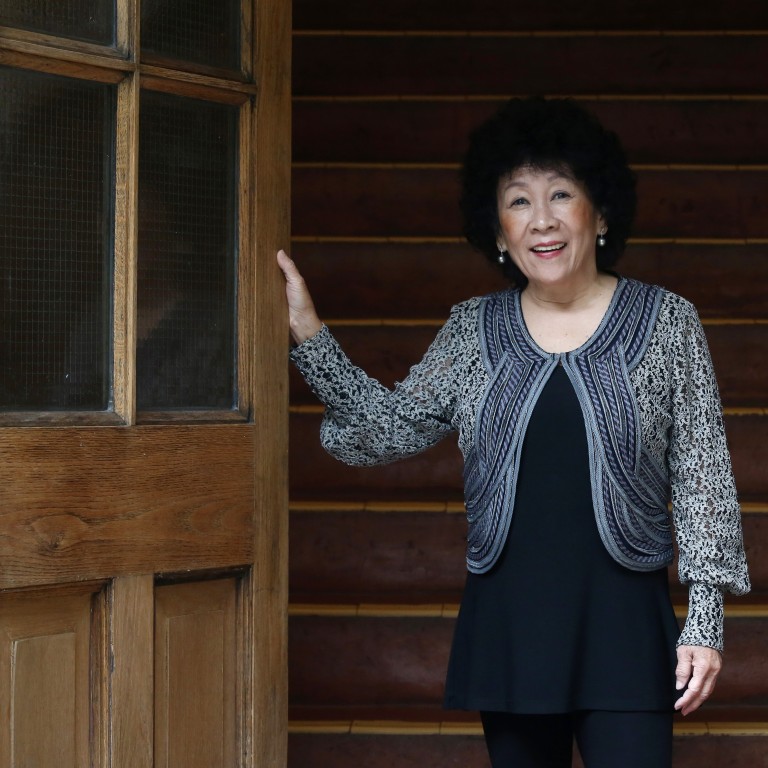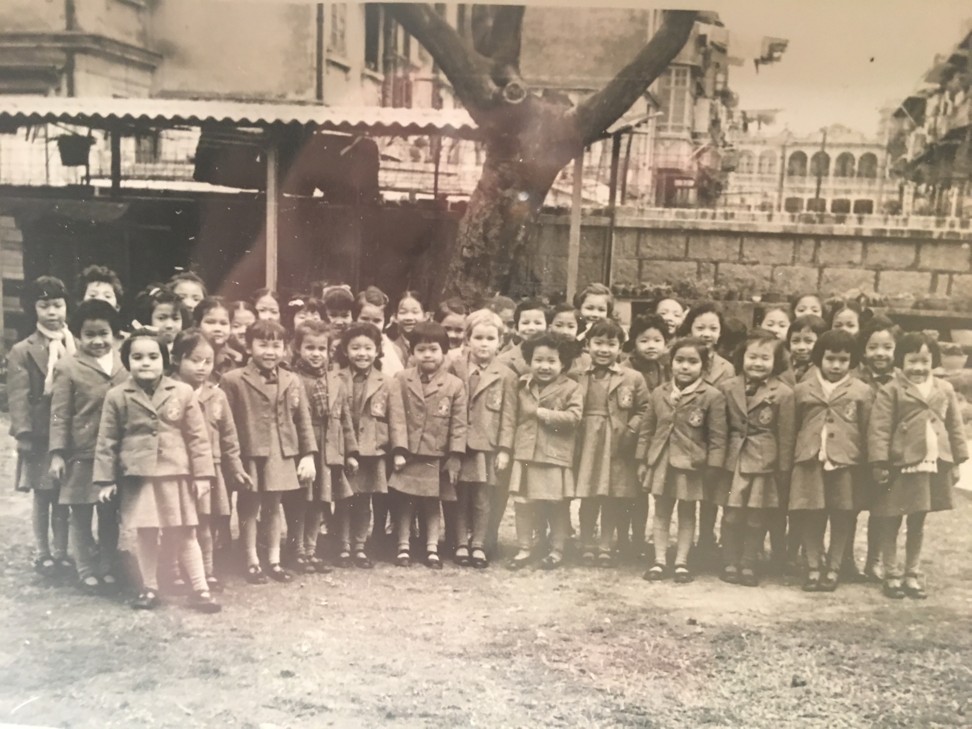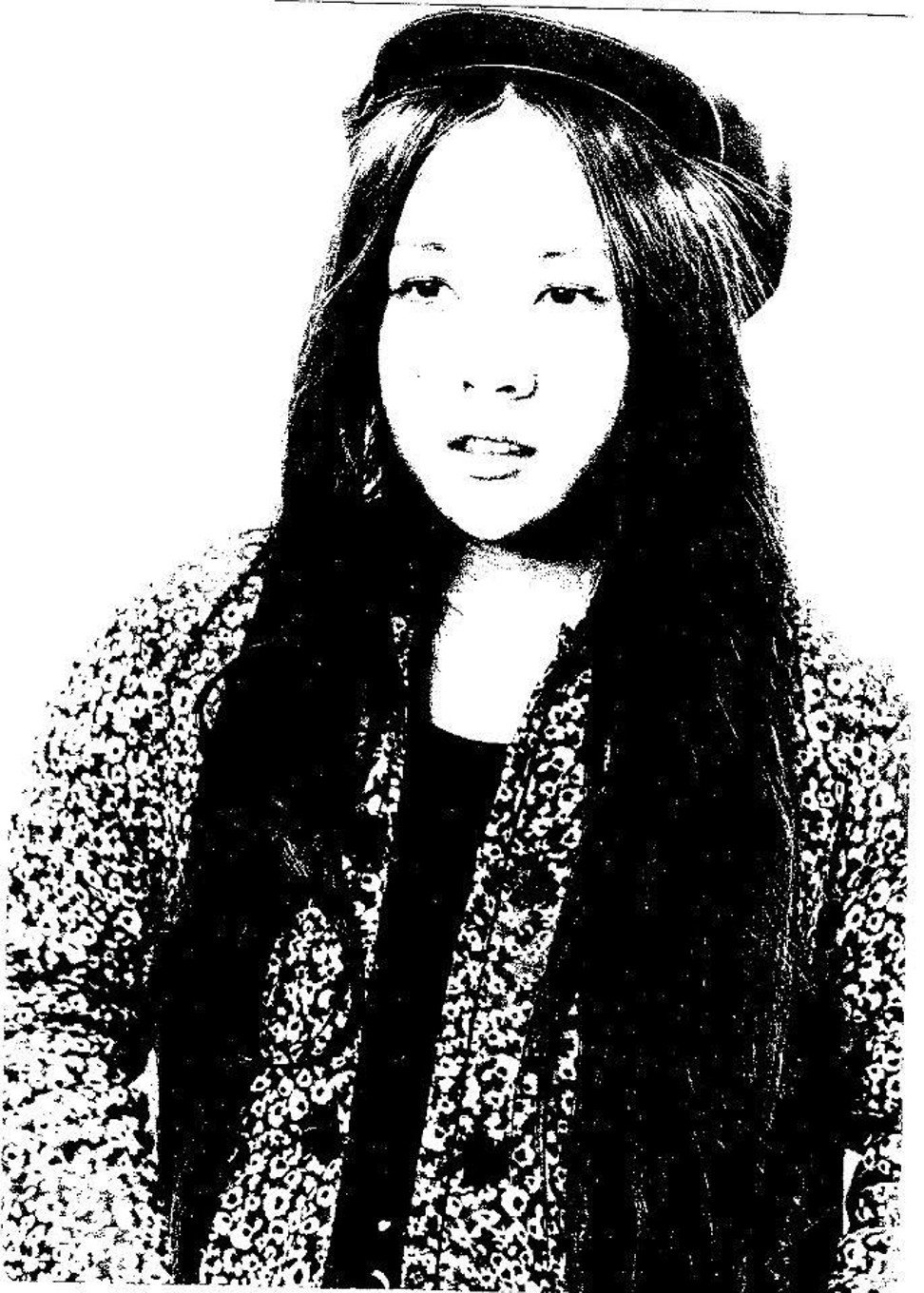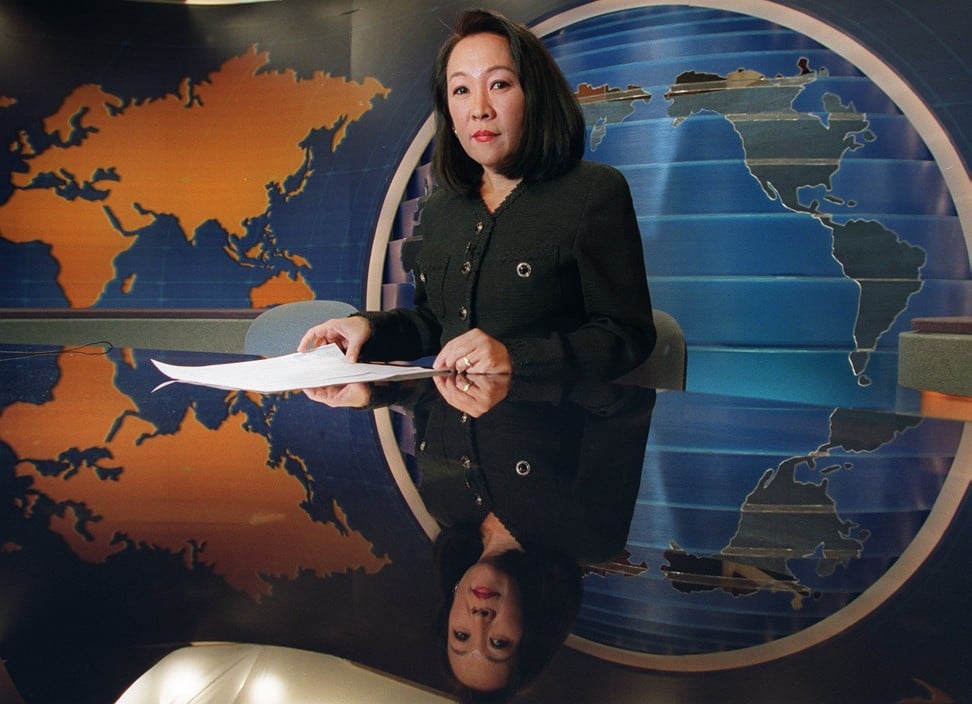
How Diana Lin went from militant Maoist in the US to the face of English TV news in Hong Kong
- Deported from San Francisco for overstaying her visa, she went on to become a familiar face on English-language television
- Now retired, Lin never lost her appetite for politics and attended ‘almost all’ of last year’s protests
Ideal childhood: My grandfather went to Hong Kong University and studied Western medicine. There he met Sun Yat-sen, who was a couple of years older, and who asked if he’d join the revolution. He said he couldn’t, he had eight kids. One was my mother. During the war she was sent to China and went to Lingnan University (Guangzhou) to study agriculture, which was more like botany. Flowers were her lifelong passion and she was often trying to cross-pollinate them.
My father studied at St John’s University, in Shanghai, and moved to Hong Kong, where he met my mother. He owned a textile factory. I was born in 1951, in our family home in Tsim Sha Tsui. My grandfather delivered me – he delivered all his grandchildren. I have three sisters and a brother; I’m in the middle. It was a happy childhood. We moved to Kowloon Tong where we lived at 41 Cumberland Road, a house later bought by Bruce Lee.
Up with people: I went to Diocesan Girls’ School, on Jordan Road, from kindergarten. School life was great. Nowadays people talk about the pressures of elite schools, but I don’t think any of us felt pressure in those days. I was into sports. I joined an organisation called Moral Re-Armament. It was interdenominational and had a youth wing called Up With People. Gandhi and Henry Ford were said to have been members.
There would be 100 young people on stage singing uplifting songs. The Japanese caught on (to the movement) and formed a singing group, which came to Hong Kong. I covered it for my school newspaper – we didn’t have a newspaper as such; I used the school noticeboard to post my stories – and a lot of my friends joined.

We formed a group called Sing Out Asia and got members from other Asian countries together to tour the United States. Moral Re-Armament ran an experimental college on Mackinac Island, in Michigan, called Mackinac College. When I was 17, I decided to join the singing group and study there. It was a beautiful college in the middle of the Great Lakes, but it soon went bankrupt (in 1970).
American Maoist: The dean of Jacksonville University, in Florida, was a friend of my mother, so I went there and majored in English. After that, I drove with some friends from Florida to California. It was the early 1970s and we caught the tail end of the flower power movement. I didn’t want to go home, so I enrolled in the San Francisco Art Institute.
San Francisco was really interesting in those days. Third world (non-white) affirmative action was very strong. I worked for the city of San Francisco as a muralist and joined a Maoist group called I Wor Kuen, Chinatown’s answer to the Black Panthers. At night we went around the city and spray painted walls with Maoist slogans. We ran ourselves like a Maoist organisation, with a Politburo and Central Committee, and had study groups with Mao’s “little red book”.
Mao Zedong was quoted as saying, “Political power grows out the barrel of a gun.”We took that literally and all packed guns. I carried a .22 (pistol) around for a while; I didn’t shoot anyone. We practised in the city, shooting at Coit Tower. It was an exciting time. I met an American guy who was studying law at Harvard. We did the long-distance thing until he dropped out.
In those days, there was a big gay revolution in San Francisco and everyone around me came out – including my husband and my best girlfriend. She was a conservative Hong Kong girl and when she came out she asked me to accompany her to a lesbian bar, Peg’s Place. There I met a bunch of girls from Hong Kong, including two who had been my classmates at Diocesan Girls’ School. A lot of them are still friends.

Jail bird: I’d finished my studies and no longer had a student visa, so I applied for a green card. Although I chased immigration for it, I never heard anything. Then one fine day, three or four years later, immigration called me and said they had found my file and asked me to go to their office.
They said they thought my marriage was a sham. I don’t know if they knew my husband had come out as gay, but they thought the marriage was a set-up. They said I had overstayed and packed me off to a maximum-security prison for the night. I was in a cell with murderers – even they couldn’t believe I was in for an immigration issue. My husband bailed me out the next day and we hired a lawyer, but he didn’t present a good case and we lost, and I was deported. I arrived back in Hong Kong in late 1976; I’d been in the States for nine years.
Anchored in: I got a job as the editor of a women’s magazine called Femina, even though I knew nothing about fashion. I went with the publisher and a photographer to London and Paris, where I interviewed Karl Lagerfeld, Bernard Lanvin and other big names in fashion. After a couple of years, I joined The Star as a feature writer and columnist and then moved to the Hong Kong Standard, where I worked with Chris Bale.
After Chris moved to RTV – which was renamed ATV in 1982 – he called me and said they needed a reporter and asked if I wanted to join. I thought I’d give it a try. That was 1980 and I’ve been in television ever since. Within a few months I was made an anchor, but I did other roles as well, like reporting and subbing.

Beijing and back: In 1985, I met an American guy called Dave. When he became the bureau chief of UPI in Tokyo, he asked if I’d go with him. We lived there for two years and I worked as a stringer. When he moved to Beijing as the bureau chief there, I went with him. Beijing was very liberal at that time. Access to high government officials was relatively easy, despite the fact I was working as a stringer and not accredited.
After Dave and I split up, I met a French-Canadian cameraman, Francois Bisson. Then the head of ATV News asked if I’d come back to Hong Kong and be the English head of documentaries. So in 1988, I went back to Hong Kong to start Vision Today, which became Inside Story. Francois moved to Hong Kong and started his own production company and we married and our daughter, Gabriella, was born in 1991.
Although Gabby moved to Canada and is Canadian, she has since moved back to Hong Kong. She loves animals and has a pet care business here. Francois and I divorced in 2014 and he went back to Canada. We sold our flat in Braemar Hill and I moved to Tin Hau. I love the area and take walks around Victoria Park. There is so much space and trees.

Life after TV: I stopped anchoring the news in 2007, but continued presenting The Pearl Report. As a senior executive producer, I oversaw all the stories. I retired in February 2018. After I retired, I signed a contract with RTHK to work on Hong Kong Connection and I also do some translation work for Now TV and TVB – I mainly help them with the Shaw Prize stories. I do voluntary work for Suicide Prevention Services and Foodlink, for which we collect food from restaurants and hotels in refrigerated vans and take it to people at St James’ Settlement and other places.
I’ve also been busy with the protests and have been to almost all of them. I support the young protesters. We are peaceful, rational and non-violent protesters. After a protest you feel so good because people are so supportive. Young people are polite and intelligent when you talk to them, they know what they are doing. I could leave Hong Kong and go to Canada, but I’m staying. What would I do in Canada? I don’t really know anyone there. Home is where your loved ones are, your friends and relatives.

